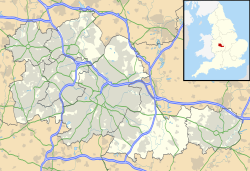History
The building formed part of an initiative in the 1960s by Birmingham City Council to improve the road infrastructure in the area and to redevelop the city centre. [1] The site selected for development had previously been occupied by the "Perryian Pen Works", a business owned by Perry & Co., which ceased trading on the site in the 1960s. [2] [3] [4] The factory was demolished in the late 1960s and replaced, briefly, by a motor car and cycle accessory depot. [5]
The conversion of the depot into an office block, which was designed in the brutalist style, was completed in the early 1970s. [6] The design of the new building preserved the shape of the motor depot with a main frontage of 17 bays facing the Lancaster Circus roundabout, and then a long side wing of 34 bays extending along Staniforth Street. [2] The office block served as the headquarters of West Midlands County Council from its formation in April 1974 becoming known as "County Hall". [7] [8] [9]
Following the abolition of the county council in 1986, [10] the building was renamed 1 Lancaster Circus and occupied, as workspace, by the architecture, engineering, building, finance, environmental and consumer services departments of Birmingham City Council. [11] [12] A programme of refurbishment works to convert the building to an open plan layout was undertaken by Wates Group at a cost of £23 million to plans by architects, Urban Design, and completed September 2010. [13] [14] The redevelopment, which increased the capacity of the building from 800 occupants to 2,000 occupants and involved the installation of 179 chilled beams, [15] won a regional award from the British Council for Offices in 2011. [16] [17]
The city council closed the building and announced the proposed redevelopment of the site in 2022. [18]
This page is based on this
Wikipedia article Text is available under the
CC BY-SA 4.0 license; additional terms may apply.
Images, videos and audio are available under their respective licenses.

